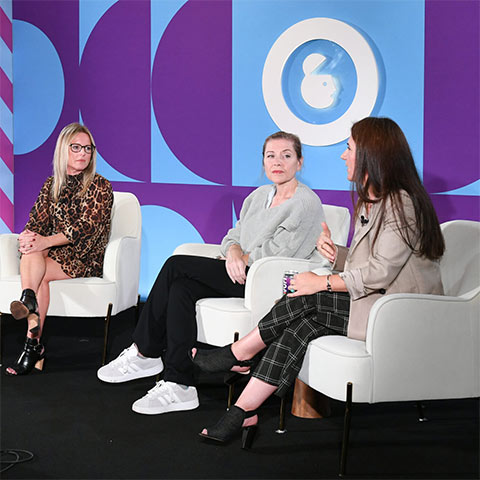Improve Customer Experience By Adopting a Subscription Service


Subscription models have made a big splash in the last few years - pure-play subscription players like Dollar Shave Club and Graze have built strong and loyal customer bases by providing a regular and personalised service with a fun and evolving customer experience.
This has caused the bigger brands take notice and incorporate subscription models into their businesses. One example of this is Nestle’s Nespresso; a comparatively low priced coffee system which only works with Nespresso branded capsules. These can be purchased in supermarkets, but are available cheaper directly from Nestle. This direct channel brings the customer closer to the brand and allows them to build a relationship.
Some companies take this even further - Amazon’s Prime subscription service delivers a seemingly fantastic set of benefits for a relatively low price - in fact, so low that it doesn’t quite make sense until you realise that Prime Customers spend substantially more with Amazon.
Read on to discover why subscription models can help brands and retailers improve their customer experiences and consider whether adopting this model could work for your business.
Subscriptions & The Customer's Experience
Customers have many reasons to choose brands - perhaps they believe in a brand’s values, or they think that the quality is good for the price point. Perhaps an offer has tempted them to give it a try, or their usual choice is sold out. Whatever inspires the purchase, marketers have an immediate issue, which is “how can I keep the customer buying my brand?” and, especially if they’ve purchased through a third party, “how can I market to that consumer?”.
As such, three of the key benefits of the subscription model are that it greatly reduces a consumer's likelihood of switching brands, it reduces their exposure to other brands and lastly, it gives brands a direct relationship with the customer.
From the customer's point of view, subscriptions reduce their need to make these choices, reduce their likelihood of running out of a product (or service) and often offer significant discounts.
Opportunities for Marketers
Personalisation
Another way businesses can use subscriptions to help improve the customer experience is by using customer feedback to tweak and optimise the products or services you supply to them, allowing you to improve and personalise your subscriptions for each individual consumer.
Cross-Sell and Up-Sell
Using the data that you’ll be collecting from subscribers, you can cross-sell or up-sell items that you think your customers will enjoy, but wouldn’t necessarily think of purchasing themselves. This will improve your relationship with your customers by refining their subscription and becoming more than just another retailer and actually developing your customers love for what you sell.
Frequency
As you will be in contact with your customers regularly (as opposed to a customer who shops with you once or twice a year), you will have a much faster feedback loop, meaning you can react to suggestions or complaints faster than traditional retailers and continually improve your customer journey.
The Challenges
Subscriptions don’t work for every retailer or for every customer. There are certainly some challenges to be aware of;
Apathy
Subscription services can quickly become boring - if the customer is simply receiving the same thing every week/month/etc, they might begin to think of your brand as a dull commodity that they don’t put much thought into. Added to this, a single customer may have multiple subscriptions, so standing out from the crowd can be difficult.
Fulfilment & Customer Service
If customers expect and rely upon a regular service, a failure in the system, such as a lost delivery, may have a much larger impact than a one-off purchase. Exceptional operational processes need to be in place in order to assure a top quality customer experience.
Control
Some customers could feel like they have less control over what they are receiving or when they’re receiving it. Retailers need to carefully consider who their audience is and what they want before adopting a subscription service, and remember that even with a subscription service, customers still need to feel that they have choices. Minimising spend/contract length thresholds will help reduce the sense of “commitment-fear” that customers naturally feel when subscribing.

Could subscription models work for your business?
Subscription models don’t just affect the customer’s experience - businesses looking to offer a subscription service will have to adapt their operations. One benefit of a subscription model is that businesses will have a better idea of where to focus resources - With subscriptions, it’s much easier to forecast demand.
The flipside of all this is that customer acquisition for subscription based services can be a much tougher challenge, due to the larger commitment requirement from the consumer.
Customer retention is paramount for subscription-based companies - if you are planning to adopt subscription models, you will need to consider how you are going to keep your brand vitalised and prevent your valuable customers from opting out.
As we’ve discussed, there are many subscription strategies - from “loss leaders” like Amazon Prime to brand-direct, like Nespresso capsules or simple price/convenience propositions like Dollar Shave Club. Of course, each one has unique pro’s and con’s, but generally, subscription offerings have the potential to add to your bottom line.
Want more like this?
Want more like this?
Insight delivered to your inbox
Keep up to date with our free email. Hand picked whitepapers and posts from our blog, as well as exclusive videos and webinar invitations keep our Users one step ahead.
By clicking 'SIGN UP', you agree to our Terms of Use and Privacy Policy


By clicking 'SIGN UP', you agree to our Terms of Use and Privacy Policy







![[Research] Apps: The Secret Engine of Ecommerce Growth [Research] Apps: The Secret Engine of Ecommerce Growth](https://images.bizibl.com/sites/default/files/apps-and-web-similarweb-480.jpg)

